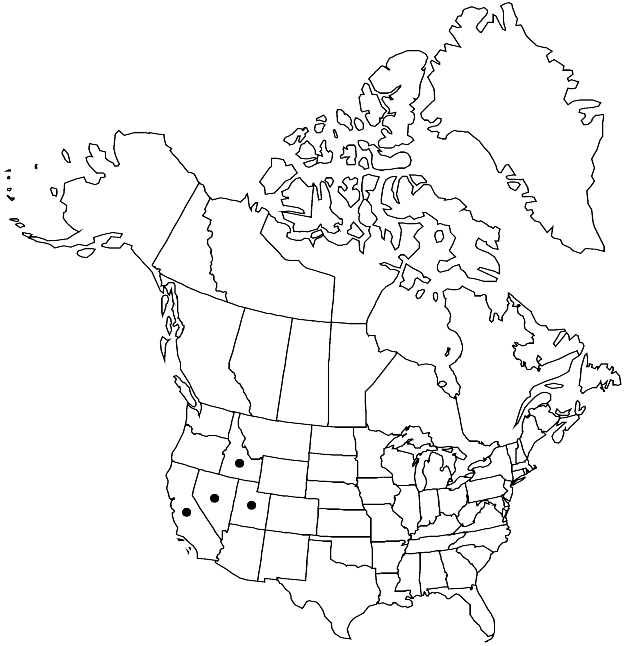Orthotrichum flowersii
Bryologist 74: 159, figs. 1 – 8. 1971.
Plants to 0.5 cm. Stem leaves stiff, erect-appressed when dry, ovate-oblong to oblong-ligulate, 2–2.8 mm; margins revolute, entire or rough near apex by means of projecting papillae; apex rounded-obtuse, often mucronate, carinate; basal laminal cells rectangular to short-rectangular, walls thin, not nodose; distal cells 13–19 µm, 1-stratose, papillae 2 per cell, conic, small. Specialized asexual reproduction by gemmae on leaves. Sexual condition autoicous. Seta 0.5 mm. Capsule immersed or short-emergent, ovate-oblong to oblong when mature, 1–1.4 mm, strongly 8-ribbed 1/2–3/4 capsule length when dry, constricted below mouth when dry; stomata immersed, to 1/2 covered by subsidiary cells, cells not projecting, inner walls not much thickened; peristome double; prostome absent; exostome teeth 8, reflexed, densely papillose or papillose-striate distally; endostome segments 8, not well developed, usually of 1 row of cells, finely roughened. Calyptra oblong, smooth, naked or hairs few, smooth. Spores 10–17 µm.
Habitat: Base of trees, trunks of deciduous trees, xeric and exposed habitats
Elevation: moderate to high elevations (500- 2000 m)
Distribution

Calif., Idaho, Nev., Utah, Europe.
Discussion
Orthotrichum flowersii is distinguished from O. pallens and O. pumilum by its blunt, carinate leaves that are ovate or ovate-oblong, almost always with a small mucro. The leaf apices are subcucullate; the stomata are found in one or two rows mid capsule.
Selected References
None.